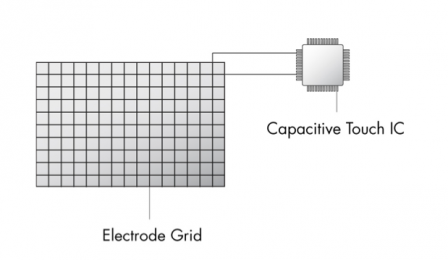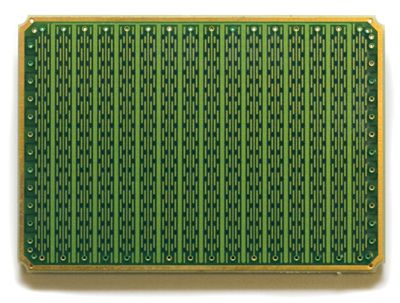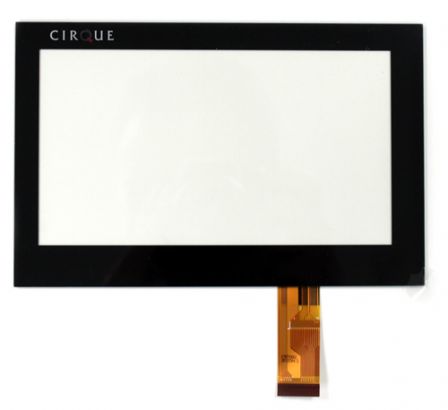
The Technology of Touch
Cirque solutions are all built upon the technology of capacitive touch sensing. By sensing the minute difference in electrical fields that are caused when a finger touches a sensor grid, it is possible to track the position of that finger with great precision and speed. Cirque is one of the original developers of this technology, and we have been refining these methods since the late 1980s. Today capacitive touch sensing is one of the most common methods of human computer interaction, and is found in devices from specialized industrial controls to smartphones and tablet computers.
Cirque's core technology is based on a principal called "mutual capacitance". Mutual capacitive sensors are comprised of a grid of electrodes that are then connector to a touch controller chip, or IC (Integrated Circuit).

In trackpads, the touch sensor is built using conventional circuit board material upon which is printed an electrode grid is made out of copper. For touch screens, the sensor is built out of glass or plastic, and the electrode grid is made out of a clear conductive material. One such material that is commonly used is Indium Tin Oxide (ITO). Early ITO touch sensors had poor optics, with very visible electrodes, but on modern capacitive touch screens the ITO grid is barely noticeable.


In operation, the electrode grid is driven with a signal on one axis, and the signal is sensed on the other axis. When a finger or other conductive object comes into contact with the sensor, the electrical capacitance between the drive and sense electrodes changes. This tiny change is measured by the touch IC and used to track finger position.
Many other advanced techniques are used to make a capacitive touch sensor work, such as special patterns used to drive and scan the sensor, compensation algorithms for adjusting to environmental conditions, and automatic calibration to ensure seamless operation. Cirque has perfected many of these techniques over the years, and added unique features like SecureSense™ to product the signals from the capacitive sensor, multi-point tracking and stylus detection.
The variety of solutions offered by Cirque all are built upon these core principles of electronics and physics, and Cirque is proud to maintain one of the oldest and most expansive patent libraries on capacitive sensing technology.
ADDITIONAL READING:
Cirque strives to create innovative touch input solutions that improve the interface between humans and technology. Founded in 1991, Cirque is the original developer of capacitive touchpad solutions for laptop computers. We have built on GlidePoint, the original capacitive touch sensor technology, and now offer a complete range of touch input solutions. Cirque technology provides solutions that are durable, versatile and feature cutting edge touch input capability.
